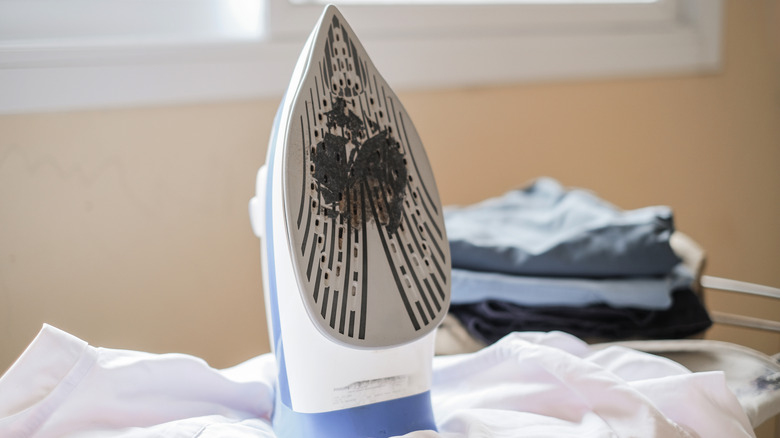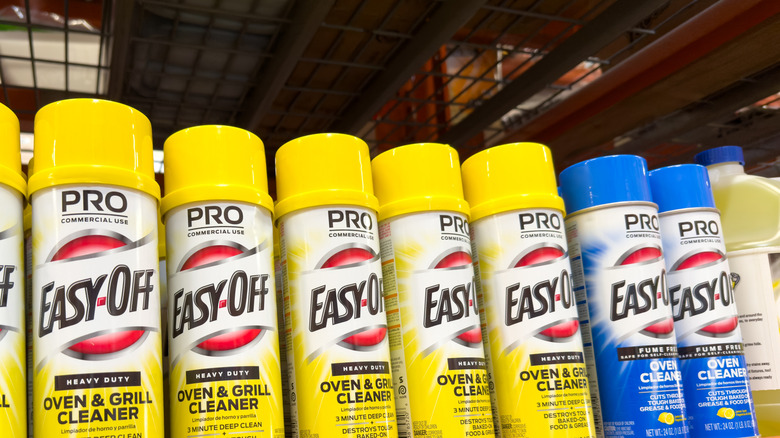Is Oven Cleaner Really The Best Way To Clean A Grimy Iron Plate?
Everything you use frequently gets dirty, so your iron will be no different. Whether you have a steam or flat iron, your soleplate (the flat part that does the straightening) is bound to get grimy with time. This could be caused by melted synthetic fibers, rust from old water, laundry product residues – you name it. But what makes dirty iron plates even more annoying is the fact that those dark marks make it harder for the iron to glide over clothes, and could even stain them. Thankfully, there are so many easy ways to clean an iron, and one of the popular hacks requires an oven cleaner. But is this really the best way to clean your grimy iron plate?
The hack itself is simple. Wrap the non-metal parts with wax paper so they don't get damaged by the cleaner. Then, spray some oven cleaner on the burnt part of your iron soleplate and leave it for ten minutes for the grime to melt away. Rinse off and wipe down the soleplate with a cloth. If you're cleaning a steam iron, use damp cotton swabs to clean the holes and you're done. You have to do this outdoors or in a well-ventilated area because oven cleaner fumes can be harmful. Also, make sure to wear a mask and gloves for safety. It's also a good idea to iron an old t-shirt first to ensure all the oven cleaner solution has been cleaned off. However, this hack may not be the best idea.
Why oven cleaners are a bad idea for your iron
Does the hack work? Yes. Most oven cleaners' main ingredient is sodium hydroxide (lye), which easily breaks down the carbon and grease that causes those black spots on your iron. But it can also be detrimental to your health, as lye can easily burn your skin and eyes, and the fumes are dangerous if inhaled. Considering that other safe and common household products will leave your grimy iron sparkling clean, it might not be such a great idea to go for one with a potential threat to your safety. Also, if you're using this hack on a steam iron, chances are that the cleaner spray will get into your iron through the vents. If you have to think twice about using vinegar inside your iron, then with lye, you have to think ten times. That chemical can melt Teflon, plastic, aluminum, and a lot of other materials, so you won't want to get it in your iron.
All in all, it's better to be safe than sorry and avoid this hack altogether. It works, but so do many others. You can work with a water and baking soda paste, toothpaste, or even a combo of toothpaste, vinegar, and baking soda. Simply spread the paste on your iron's soleplate, and leave it for some minutes before scrubbing with a cloth or soft brush (just make sure it doesn't enter your iron's vents). When the iron is clean, wipe off the paste with a damp cloth and it should be good as new.

